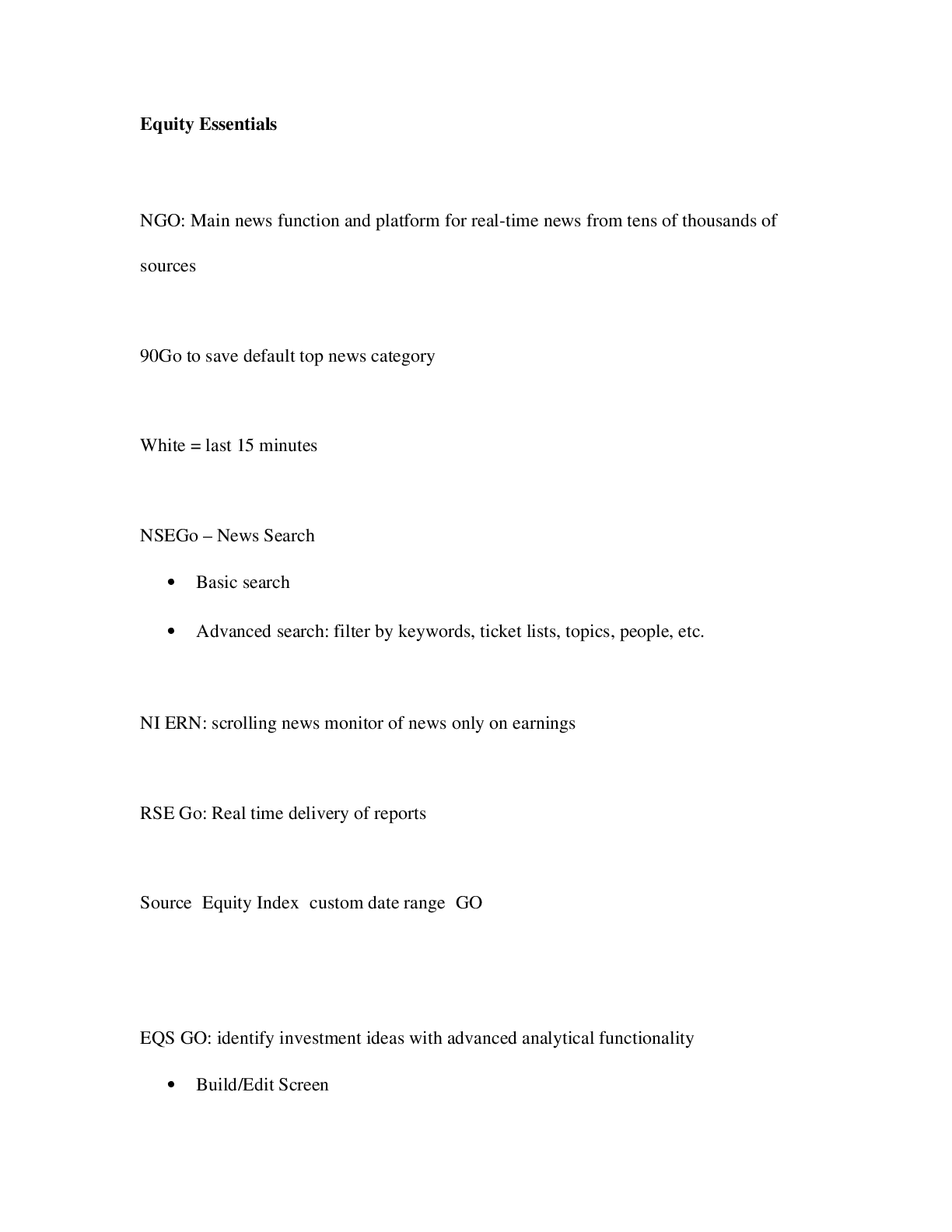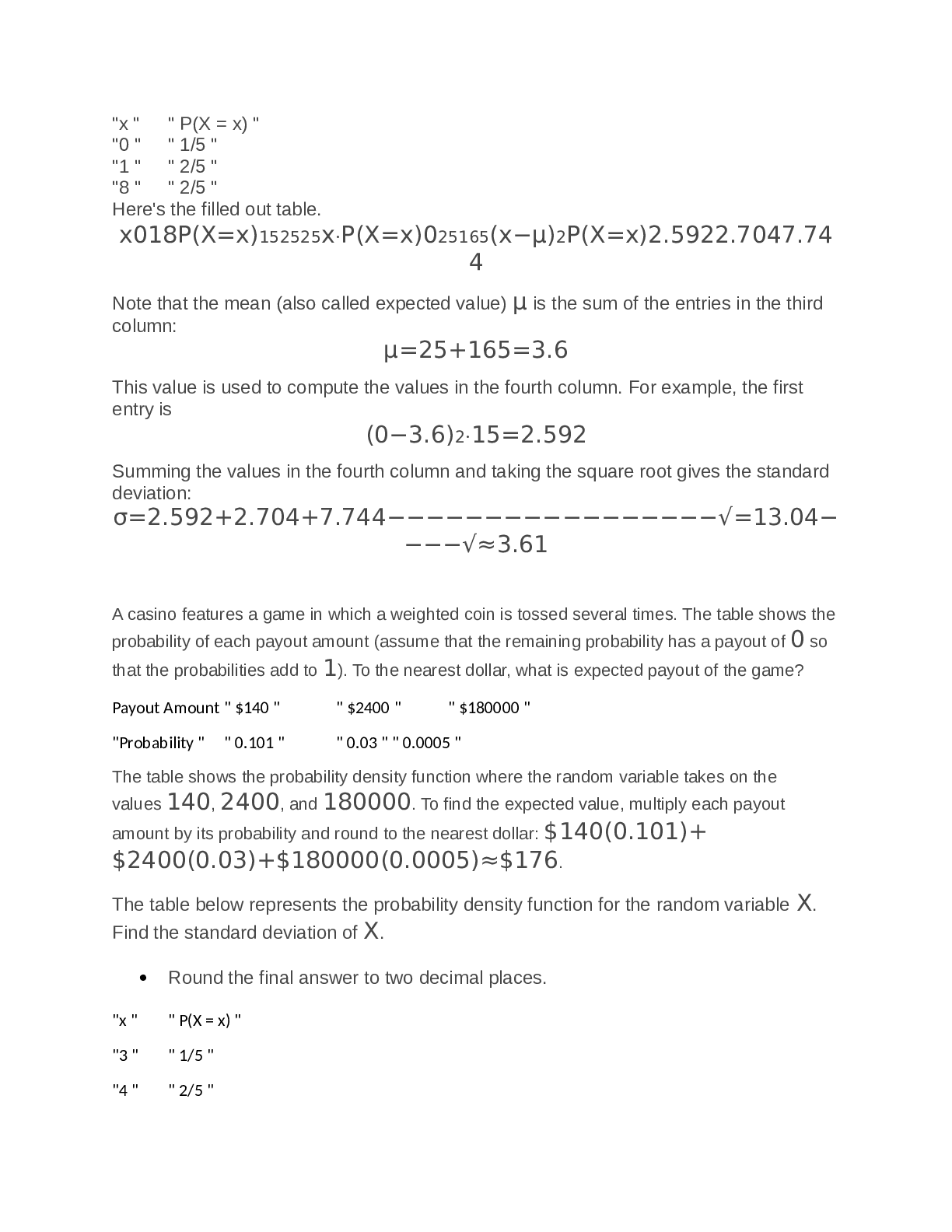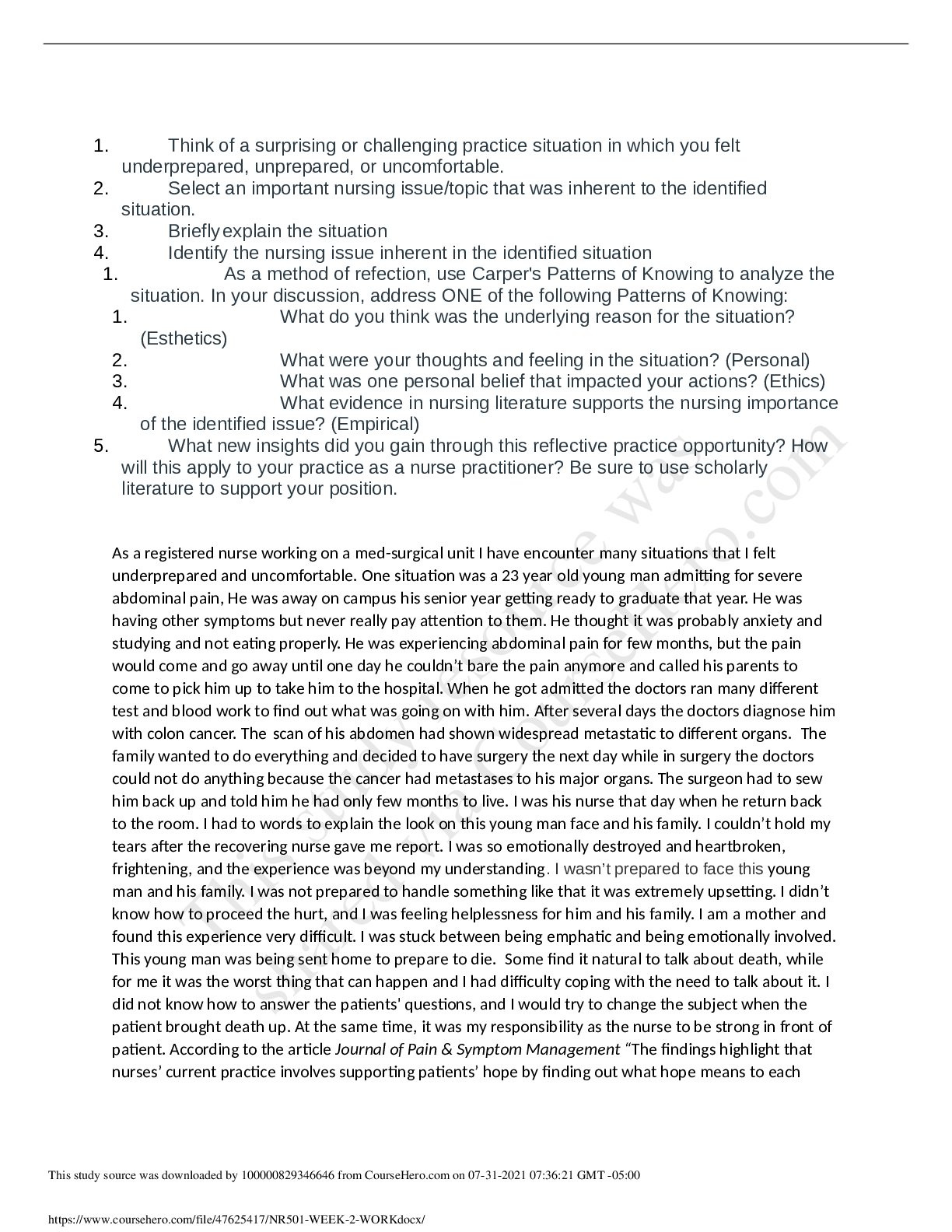*NURSING > QUESTIONS & ANSWERS > Chamberlain College of NursingNR 509c23 (All)
Chamberlain College of NursingNR 509c23
Document Content and Description Below
Chapter 23: Neurologic System Jarvis: Physical Examination & Health Assessment, 7th Edition MULTIPLE CHOICE 1. The two parts of the nervous system are the: a. Motor and sensory. b. Central and pe... ripheral. c. Peripheral and autonomic. d. Hypothalamus and cerebral. ANS: B The nervous system can be divided into two parts—central and peripheral. The central nervous system includes the brain and spinal cord. The peripheral nervous system includes the 12 pairs of cranial nerves (CNs), the 31 pairs of spinal nerves, and all of their branches. DIF: Cognitive Level: Remembering (Knowledge) REF: p. 633 MSC: Client Needs: General 2. The wife of a 65-year-old man tells the nurse that she is concerned because she has noticed a change in her husband’s personality and ability to understand. He also cries very easily and becomes angry. The nurse recalls that the cerebral lobe responsible for these behaviors is the __________ lobe. a. Frontal b. Parietal c. Occipital d. Temporal ANS: A The frontal lobe has areas responsible for personality, behavior, emotions, and intellectual function. The parietal lobe has areas responsible for sensation; the occipital lobe is responsible for visual reception; and the temporal lobe is responsible for hearing, taste, and smell. DIF: Cognitive Level: Understanding (Comprehension) REF: p. 633 MSC: Client Needs: Physiologic Integrity: Physiologic Adaptation 3. Which statement concerning the areas of the brain is true? a. The cerebellum is the center for speech and emotions. b. The hypothalamus controls body temperature and regulates sleep. c. The basal ganglia are responsible for controlling voluntary movements. d. Motor pathways of the spinal cord and brainstem synapse in the thalamus. ANS: B The hypothalamus is a vital area with many important functions: body temperature controller, sleep center, anterior and posterior pituitary gland regulator, and coordinator of autonomic nervous system activity and emotional status. The cerebellum controls motor coordination, equilibrium, and balance. The basal ganglia control autonomic movements of the body. The motor pathways of the spinal cord synapse in various areas of the spinal cord, not in the thalamus. [Show More]
Last updated: 2 years ago
Preview 1 out of 19 pages

Buy this document to get the full access instantly
Instant Download Access after purchase
Buy NowInstant download
We Accept:

Reviews( 0 )
$10.00
Can't find what you want? Try our AI powered Search
Document information
Connected school, study & course
About the document
Uploaded On
Jul 07, 2021
Number of pages
19
Written in
Additional information
This document has been written for:
Uploaded
Jul 07, 2021
Downloads
0
Views
38




.png)




.png)




